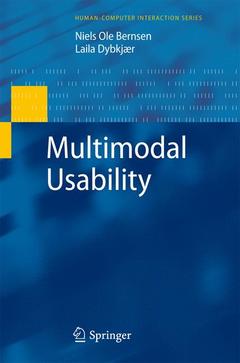Description
Multimodal Usability, 2010
Human–Computer Interaction Series
Authors: Bernsen Niels Ole, Dybkjær Laila
Language: English
Subject for Multimodal Usability:
Approximative price 158.24 €
In Print (Delivery period: 15 days).
Add to cartPublication date: 03-2012
431 p. · 15.5x23.5 cm · Paperback
Approximative price 158.24 €
Subject to availability at the publisher.
Add to cartPublication date: 10-2009
431 p. · 15.5x23.5 cm · Hardback
Description
/li>Contents
/li>Comment
/li>
First to address interactive systems development and evaluation for usability from a thoroughly multimodal perspective
First to argue that the field of human-computer interaction needs complete re-orientation to take into account the fact that GUI-based systems merely represent a single modality combination among thousands of others
Presents a thorough introduction to modalities and multimodality
The authors have a 16 year track record of usability-oriented research and development of novel, non-GUI-based systems, multimodal natural interactive systems, and modality theory




